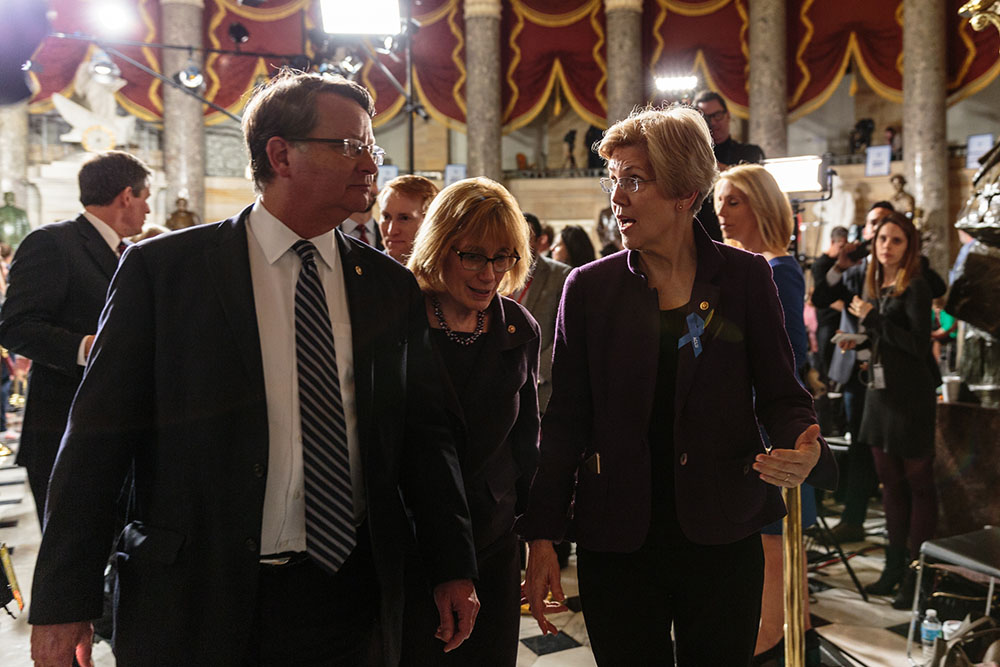
Biden framed expanded federal programs as a New Deal for middle class to compete
Joint session of congress series#
Joe Manchin, a critical vote in the 50-50 Senate, told reporters on Capitol Hill before the speech that the size of the series of programs made him "uncomfortable."Ģ. He still needs to sell members of his own party on the merits of his plans. It's also an ambitious effort politically after Democrats muscled through a COVID-19 relief bill through both chambers essentially on party-line votes due to universal GOP opposition.īiden faces long odds to get the entire scope of his proposal through - he urged both parties to come together, but there's little evidence he'll get much, if any GOP support. This is a staggering sum, especially with the U.S. In total, Biden outlined almost $6 trillion in spending - another $4 trillion on top of what Congress already approved. It would convert some items initially designed as temporary coronavirus relief to more permanent federal mainstays for millions of families.Īnalysis Biden Takes The Stage In His Dream Role, But The Pandemic Still Sets The Scene These would dramatically widen the social safety net for Americans from preschool age to those on Medicare. Lawmakers on Capitol Hill have spent weeks debating what should ultimately qualify as infrastructure, and Republicans introduced their own, much more-targeted $568 billion proposal.Īnd Biden spent much of the primetime speech Wednesday outlining another massive domestic program - his American Families Plan - a nearly $2 trillion plan that includes initiatives pushed by progressives like Sen. But it also expands beyond traditional infrastructure spending to include plans to address racial inequity and combat climate change. Less than three weeks later, he unveiled a $2.3 trillion infrastructure bill, dubbed the American Jobs Plan, which calls for spending on a range of items like roads, bridges, water systems and broadband access. But Biden, in unabashedly rolling out new, liberal federal programs, rejected that and instead argued government was the solution.īiden already notched one legislative achievement on his belt with the $1.9 trillion coronavirus relief bill that he signed in March. Politics President Biden's Address To Congress, Annotatedįormer President Bill Clinton notably declared in his 1996 State of the Union address that "the era of big government is over," marking a shift for Democrats then trying to show attention to fiscal responsibility. But he also spoke to a deeply divided room that almost had polar opposite reactions to the bulk of his presentation.

The former senator felt at home, ad-libbing references to his former colleagues in Congress, and seeming nostalgic about his time walking the halls in the Capitol.

Instead of facing a crowded chamber of lawmakers ready to interrupt with loud cheers, Biden spoke to a mostly empty chamber - only 200 attendees instead of the usual 1,600. It was a more low-key and traditional litany of policy priorities instead of the often unpredictable and unscripted moments seen in former President Donald Trump's speeches on Capitol Hill. It amounted to an updated New Deal, but one that faces a precarious path to get through razor-thin margins in both the House and Senate.īecause of the pandemic and Biden' personality, the hour-plus speech was a stark contrast from his predecessor's. President Biden's joint address to Congress looked back over the challenges he faced taking office 100 days ago in the midst of a pandemic - and declared "America is on the move again."īut the speech also outlined an ambitious, active role for the government to continue helping Americans struggling, as well as new proposals to boost the country's ability to compete. Biden made the pitch for a larger federal role in American society and marked history in the House chamber with two top women: Vice President Harris and House Speaker Nancy Pelosi. President Biden addresses a joint session of Congress.


 0 kommentar(er)
0 kommentar(er)
